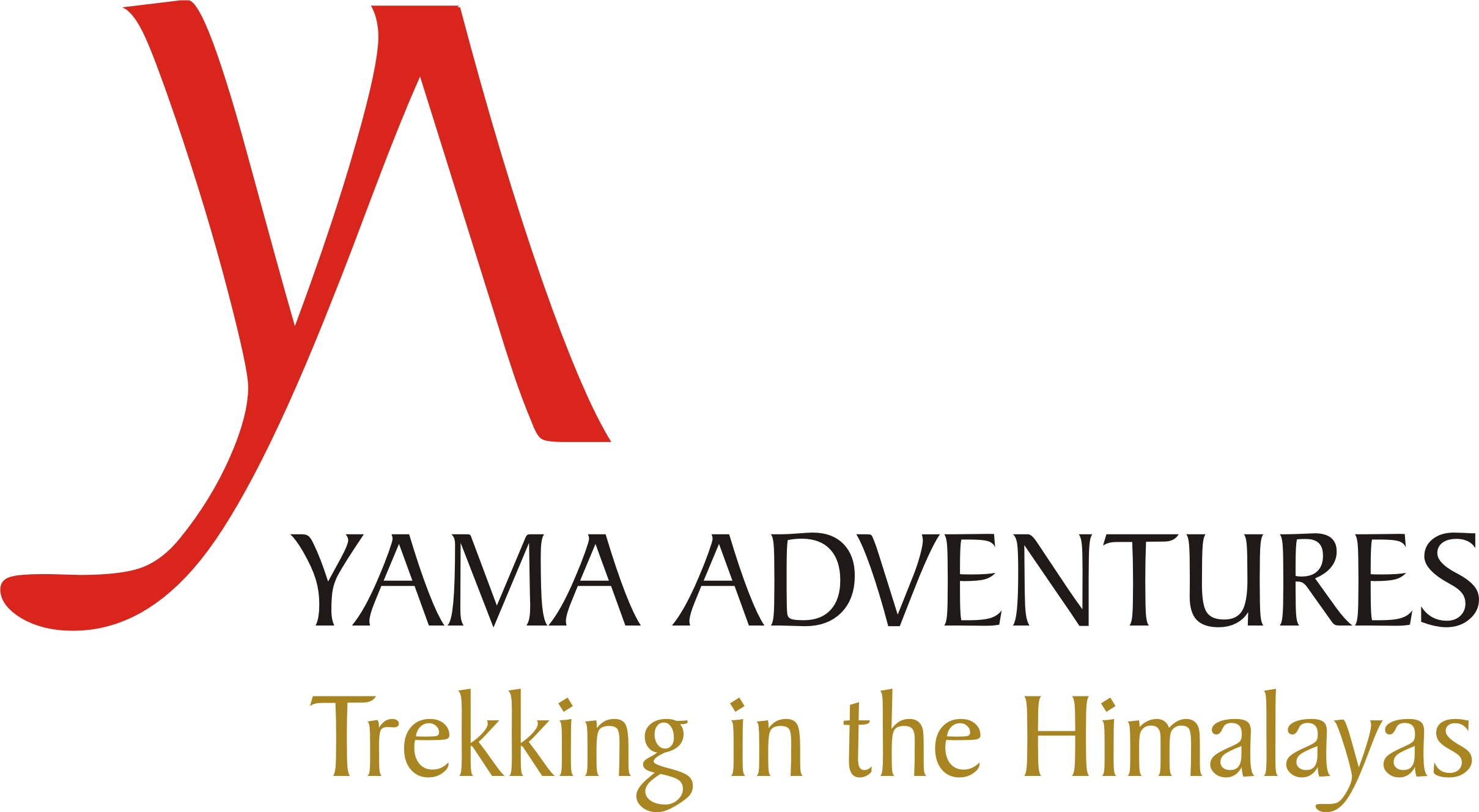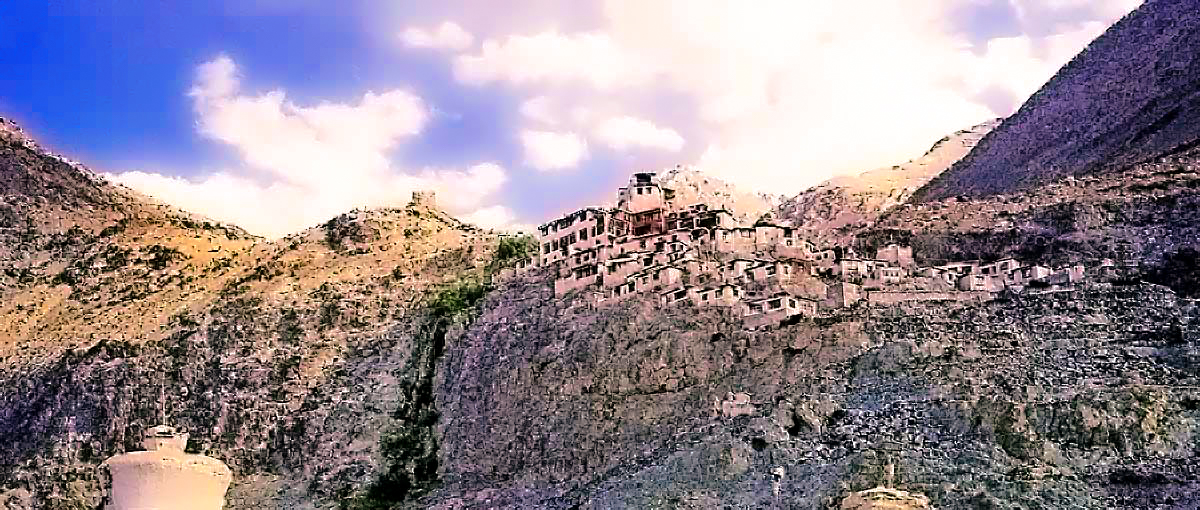
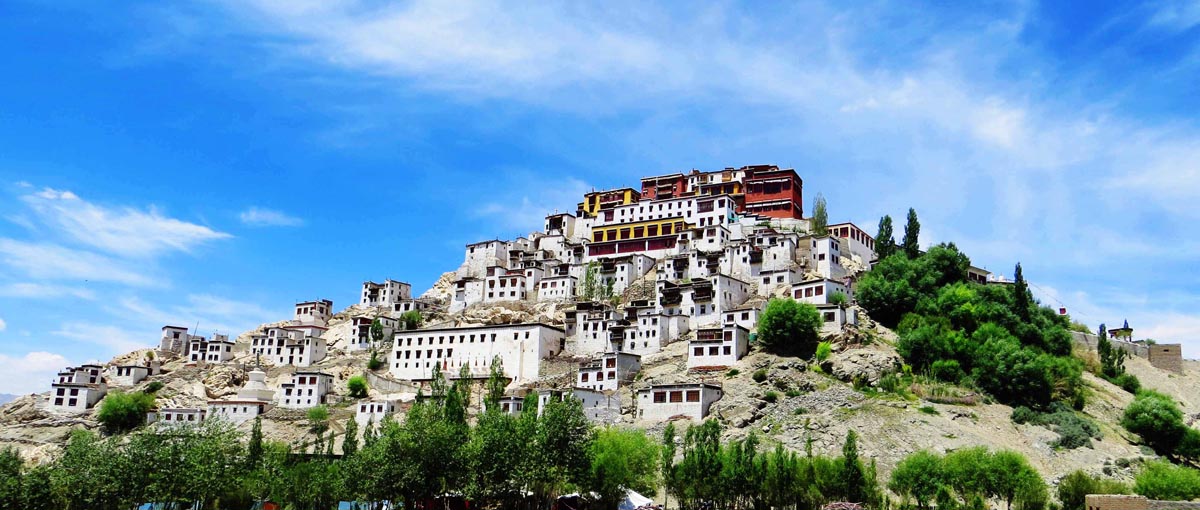
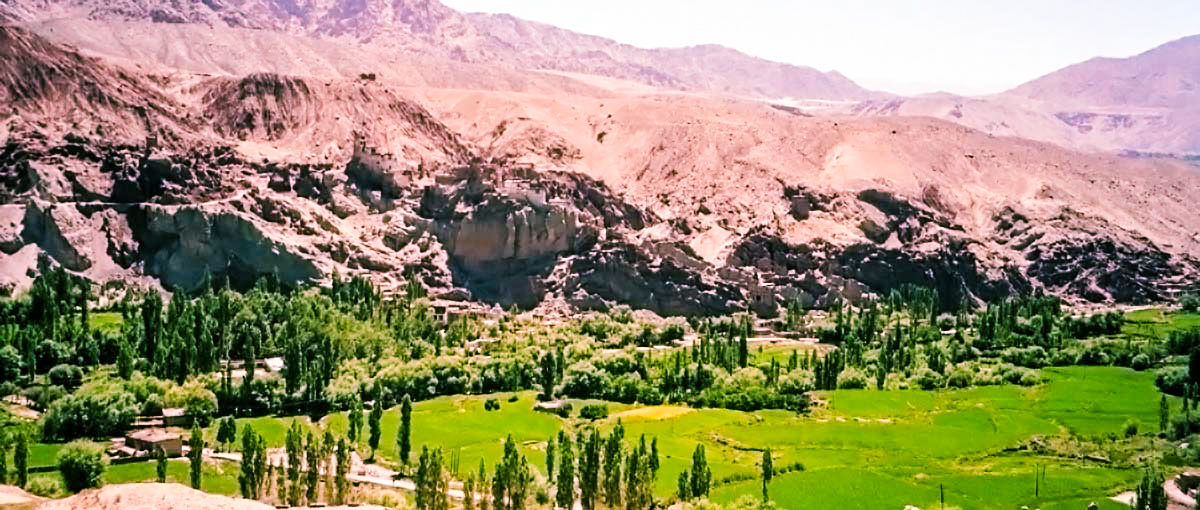
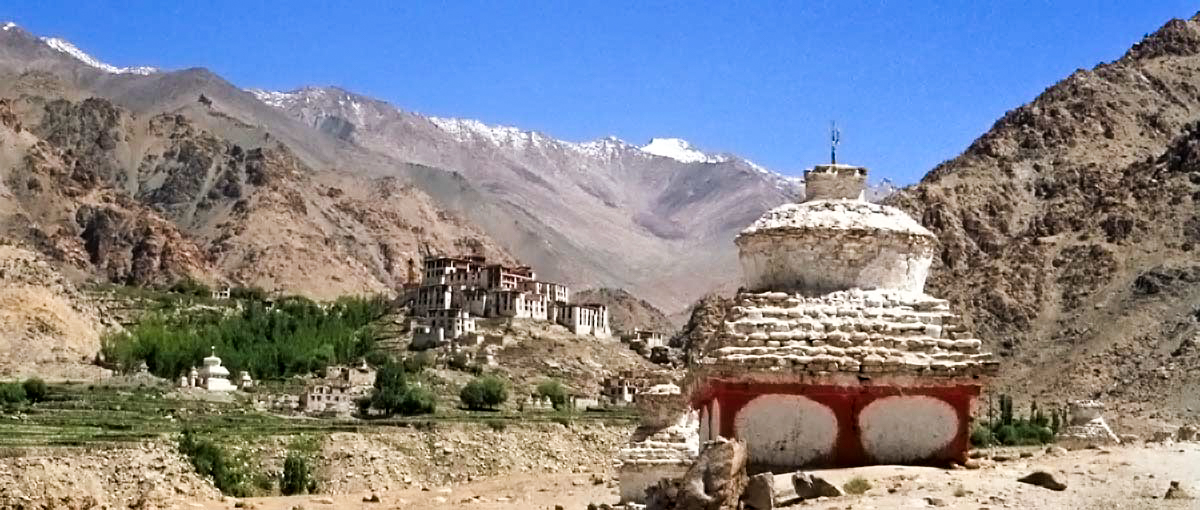

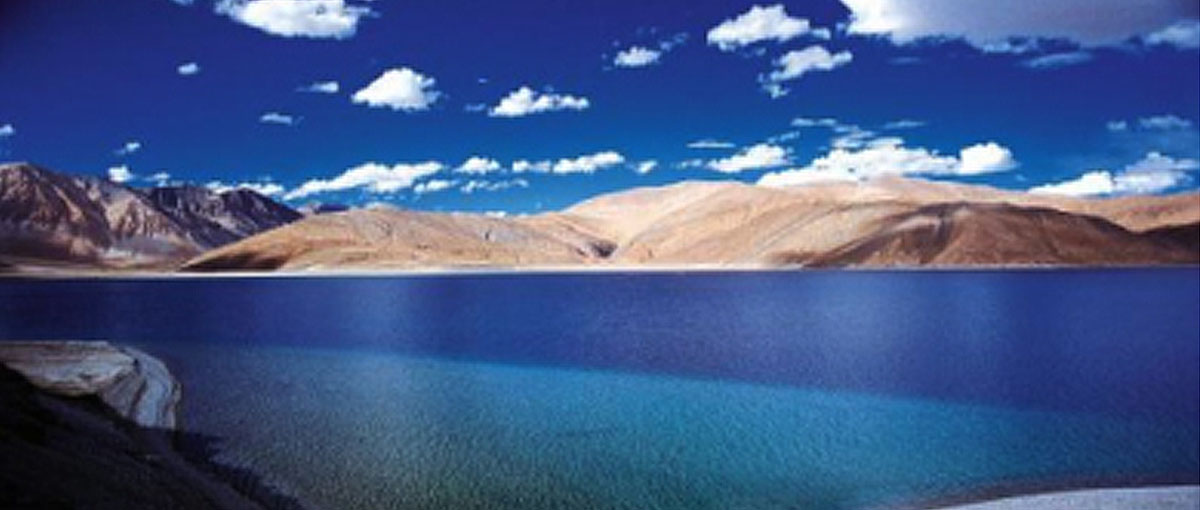
INTRODUCTION
Sandwiched in-between the Himalayan ranges of the Karakorum and the Tibetan Plateau, lies the high-altitude desert of Ladakh, or ‘Little Tibet’. Previously a major halting post on the caravan route through Asia, this Buddhist land is more culturally akin to Tibet than the lowlands further south. The beautiful multi-colored desert landscapes are arid and dotted with small villages inhabited by rugged-looking people of Tibetan heritage. This new trip includes sightseeing of the valley, an optional rafting trip and a short gentle trek through the foothills of the Ladakh Range. This trek takes you through traditional Ladakhi villages with fantastic views of the mountains. It starts with a sensational flight across the Himalaya to Leh, the capital of Ladakh. We spend three days of sightseeing and visiting impressive monasteries in the Indus Valley whilst also acclimatising to the altitude. You may choose to take an optional jeep trip to the highest road pass in the world and do some gentle rafting on the Indus River during these days of acclimatisation. You will then be driven to Yangtang, where we start the five-day trek. Our route traverses and winds its way through the Ladakh Range, part of the Greater Himalaya, and offers grand scenery and plenty of contact with the local Ladakhis. You will cross passes from one valley to the next with time to explore the monasteries and temples along the way and sample traditional village life. At the end of the trek, you will be driven to Lamayuru Monastery past some of the most spectacular moonscape scenery of Ladakh. You will also visit Alchi, a traditional Ladakhi village and home to one of the oldest temples in the region with its well-preserved 11th century wall paintings. The trip ends with a little time to explore Delhi.
IS THIS TRIP FOR YOU?
This trip is a mixture of sightseeing and walking with a fairly gentle 5-day trek, which takes in the best of the contrasting scenery that the Indian Himalaya has to offer: lofty snow-clad peaks, the wild and barren hillsides of this high altitude desert and the pretty green villages in the valley which spring to life in the summer when the crops are grown after the long, harsh winter. The trails are generally well-maintained and you will be required to walk for 3-6 hours each day with frequent stops. We have allowed 3 nights in Leh before the trek to allow for acclimatisation. The trip should be within the capabilities of those who are active and used to doing some walking. The luggage is transferred by vehicle and there will be a back-up jeep in case you want to spend more time exploring the villages. It can be very hot in Ladakh in the summer so we do start walking quite early to avoid the heat of the day.
This is a fully supported camping trek with providence of spacious two-person tents, dining and toilet tents, stools, cooking and kitchen gear and a full support staff. We have put a lot of effort into improving standards on our Indian Himalayan treks and we believe that in terms of organisation, our standards of service are as good as in Nepal – many of our Nepalese staff now work in Ladakh in the summer months and you may well find Nepalese sherpas working alongside our Ladakhi staff. All groups will be accompanied by a leader, who will be supported by a local guide, ponymen, assistant guides and a team of cooks.
Whilst on the trek you will be woken up with a cup of hot tea and provided a small bowl of warm washing water in the mornings. A First Aid kit is carried with the group.
DAY BY DAY ITINERARY
The entries in bold at the end of each day indicate the type of accommodation normally used (if different standards of accommodation are used – see accommodation section below for key to codes), and meals included (B=Breakfast, L=Lunch, D=Dinner).
Please note: walk profiles given below in the itinerary are approximate and are intended only as a rough guide. Walk durations (or pace) will vary with each group and walks may be adapted to suit terrain conditions and weather.
DAY 1: ARRIVE DELHI
DAY 2: FLY TO LEH. (3,500m/5500ft)
DAY 3: SHEY AND THIKSEY MONASTRIES
DAY 4: ACCLIMATISATION WALK
DAY 5: OPTIONAL RAFTING/ DRIVE TO YANGTHANG. (3,683m)
DAY 6: TREK TO ULLEY. (4,023m) (3.5-4 hours, 6km/3.7mi)
DAY 7: TREK TO HEMIS SHUKPACHAN. (3,663m) (4.5hrs, 8km/5mi)
DAY 8: TREK TO TEMISGAM. (3,256m) (5hrs, 13km/8mi)
DAY 9: TREK TO SKINDIYANG. (3,531m) (6hrs, 13km/8mi)
(Please note there is the option on this day of going all the way to Skindiyang by jeep, or if it is very hot you can drive to Tia at the base of the pass to avoid the heat).
DAY 10: SKINDIYANG; OPTIONAL WALKS
DAY 11: DRIVE TO LAMAYURU, ALCHI, CONTINUE TO LEH
DAY 12: PANGONG TSO. (4,250m) (5hrs)
DAY 13: PANGONG - LEH
DAY 14: DRIVE TO NUBRA VALLEY
DAY 15: DRIVE TO LEH
DAY 16: FLY BACK TO DELHI
DAY 17: RELAX IN DELHI
DAY 18: FLY HOME.
LAND COST
on request
What’s Included:
- Hotel accommodations with breakfast.
- Meals as noted in the itinerary (B=breakfast, L=lunch, D=dinner)
- Camping accommodations as per the program with all meals during the treks.
- Mule drivers and mules during the trekking.
- All monastery entrance fee, wild life fees and camping fee.
- Hindi/English-speaking guide.
- Service of cook and attendants during the trek.
- All camping equipment including North Face or equivalent sleeping tents, foam mattresses, mess tent, dining tent & toilet tent.
- All transportation from pick up from the Delhi Airport to departure.
What’s Not Included:
- Medical and evacuation insurance.
- Miscellaneous expenses and tipping to the staff.
- Alcoholic and non-alcoholic drinks.
- International Air ticket to and from Delhi.
- A single supplement
- Laundry and other services not mentioned in the package. If you need any arrangement Please let us know.
- Trip cancellation, travel delay or baggage loss insurance
- Charges incurred as a result of delays, natural calamities beyond the control of Yama Adventures.
IMPORTANT TREK NOTES
Whilst every effort is made to keep to the above itinerary, clients will hopefully appreciate that this is Adventure Travel in a remote mountain region. There will quite likely be changes to the itinerary in terms of anything from on-the-spot choice of campsite to when a rest day is taken. Weather conditions, road conditions, vehicle breakdowns off the beaten track, local availability of, horses or yaks, can contribute to the need for changes. The Trek guide will do everything in his power to see that you are inconvenienced as little as possible in such circumstances. Timings are approximate.
